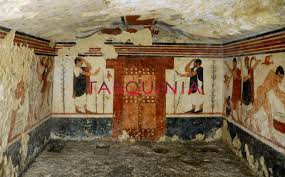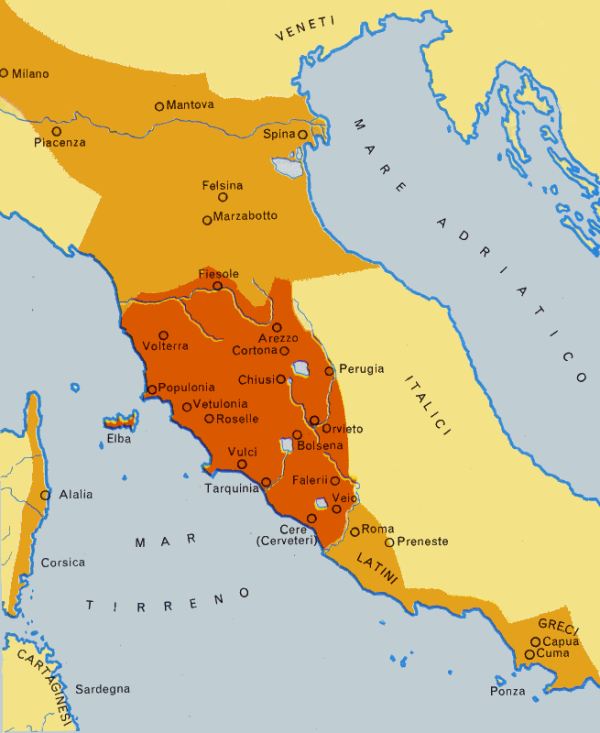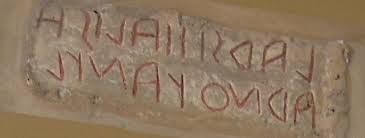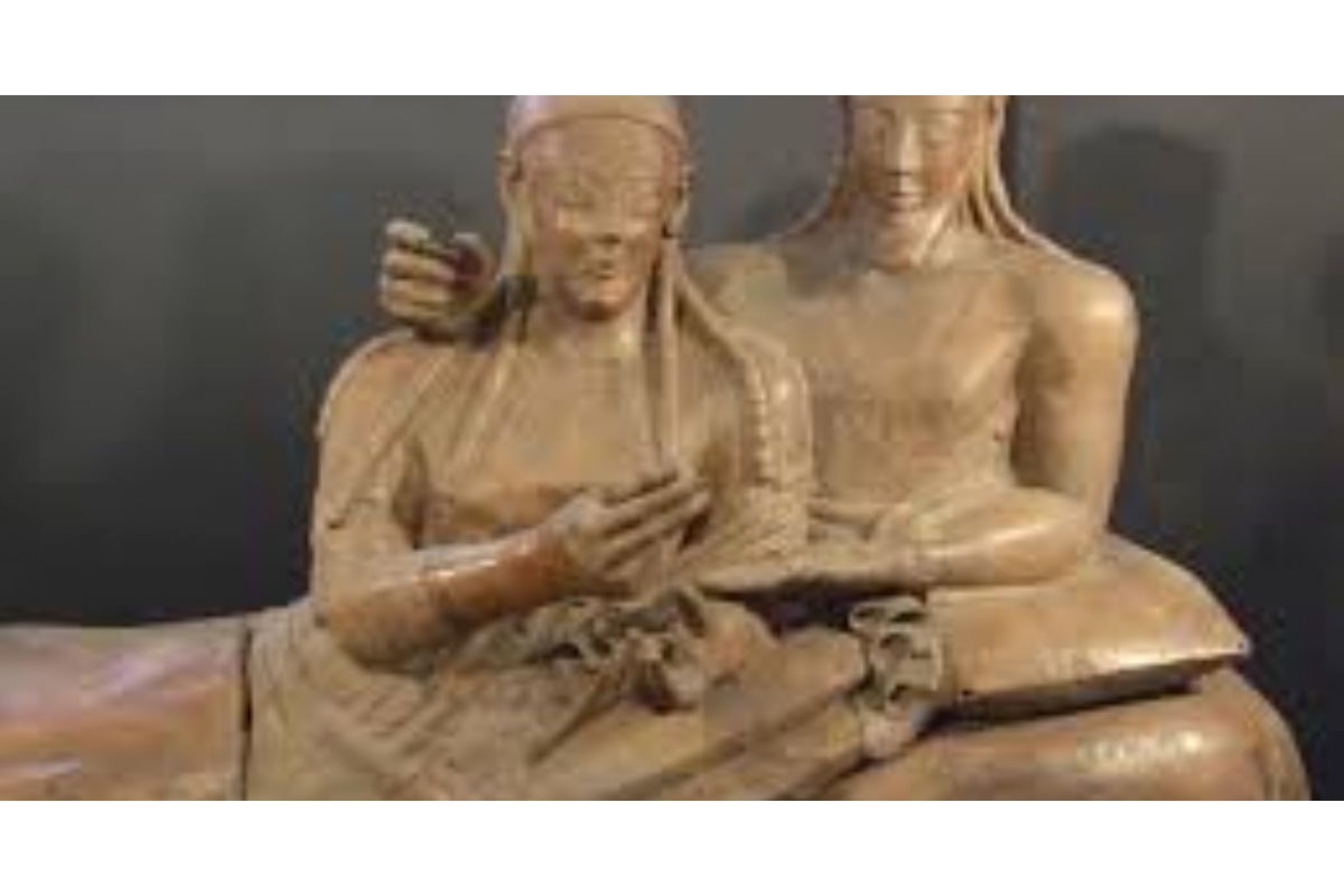The Etruscans left historical or written records only on tomb inscriptions
Most writing about the Etruscans is from roman sources, Only recently has archaeology begun to unravel the mystery of the Etruscans.
The excavation of Etruscan sites did not begin in earnest until the 18th century. The Etruscan cities of Tarquinia, Cervetri, and Vulci were excavated in the 19th century, museums began collecting objects from the digs. More than 6,000 Etruscan sites have been examined.
 We don’t know exactly what are the origins of the Etruscans, Dionysius of Halicarnassus thought the Etruscans were Pelasgians who settled in modern-day Tuscany and were mixed with the native Tyrrhenians. Virgil in the first century c.e. thought the Etruscans came from Troy.
We don’t know exactly what are the origins of the Etruscans, Dionysius of Halicarnassus thought the Etruscans were Pelasgians who settled in modern-day Tuscany and were mixed with the native Tyrrhenians. Virgil in the first century c.e. thought the Etruscans came from Troy.
Modern scientist believe that the Etruscans descended from the Villanovans of whose supposedly took the place of Villanovan villages.
Permanent settlement dates from the end of the ninth century b.c.e .The Etruscans villages were located in the marshy coastal areas of modern Tuscany and were neighbors of Latins in north of Latium .
Tombs of that era differ from those of earlier eras and contain jewelry coming from other parts of the world. The Etruscans were miners of copper, tin, lead, silver, and iron. The Etruscan language is similar to other Mediterranean languages, his alphabet was based on the Greek but with a different grammar, exact definitions of some words are still not known. 
Etruscans were agrarian, as were the contemporary peoples, but they had a powerful military that allowed them to dominate neighbouring peoples, using them as slaves on their farms, and devote their own time to commerce and industry.

